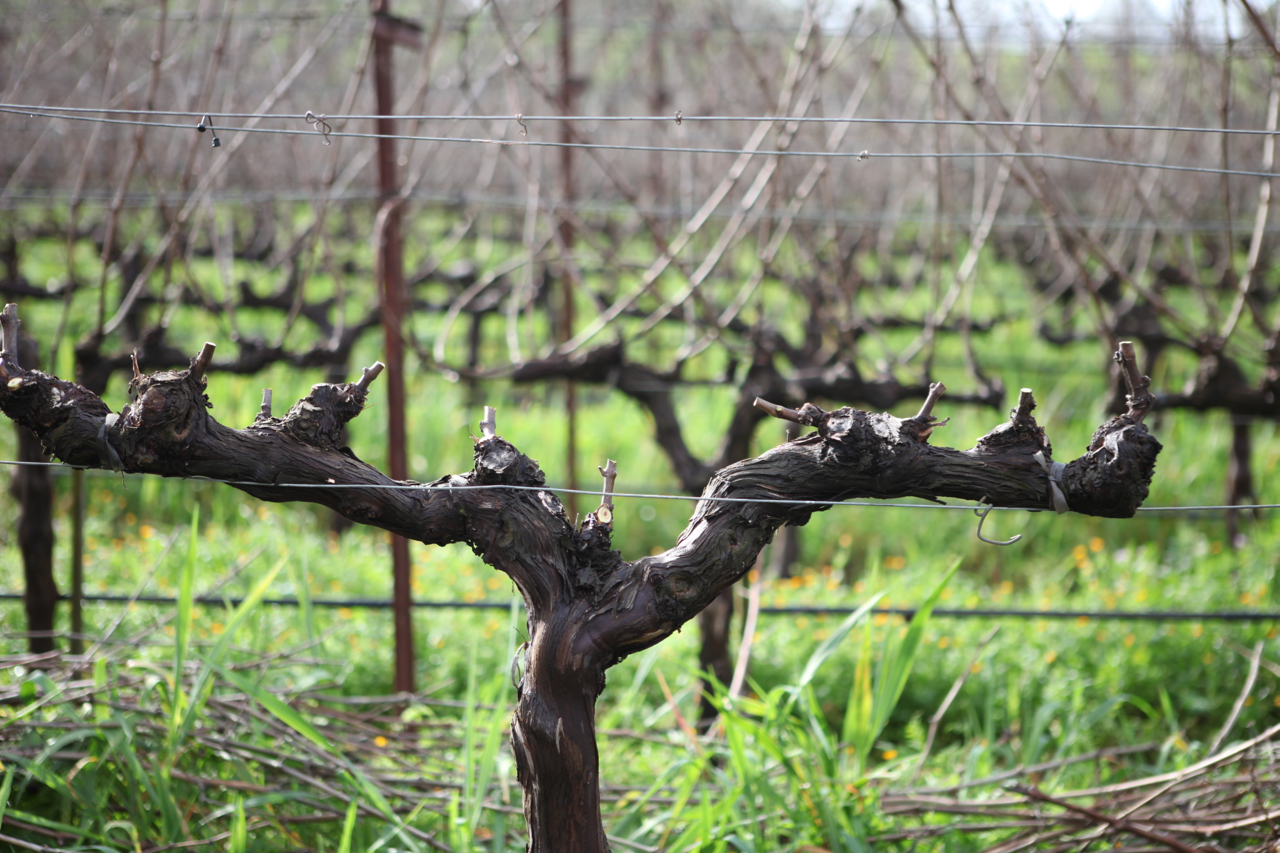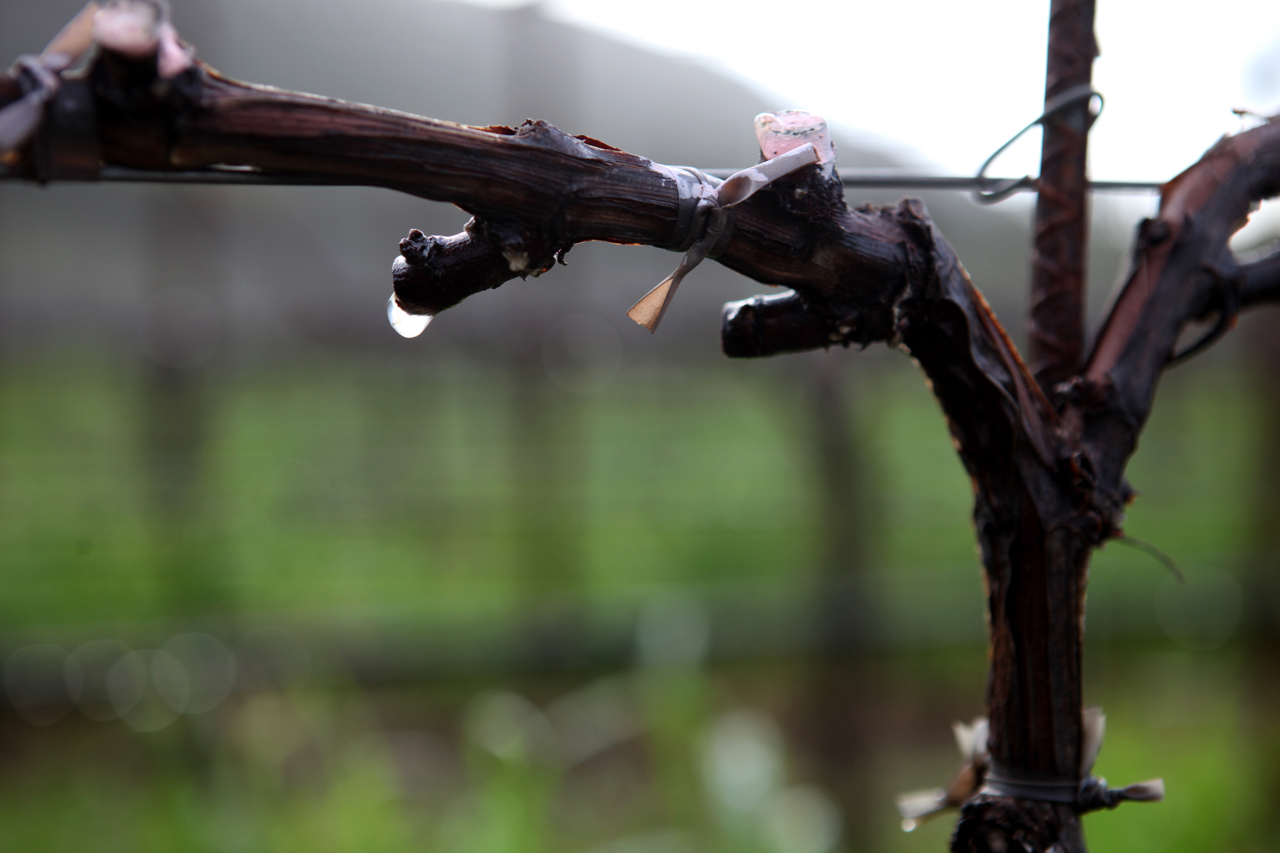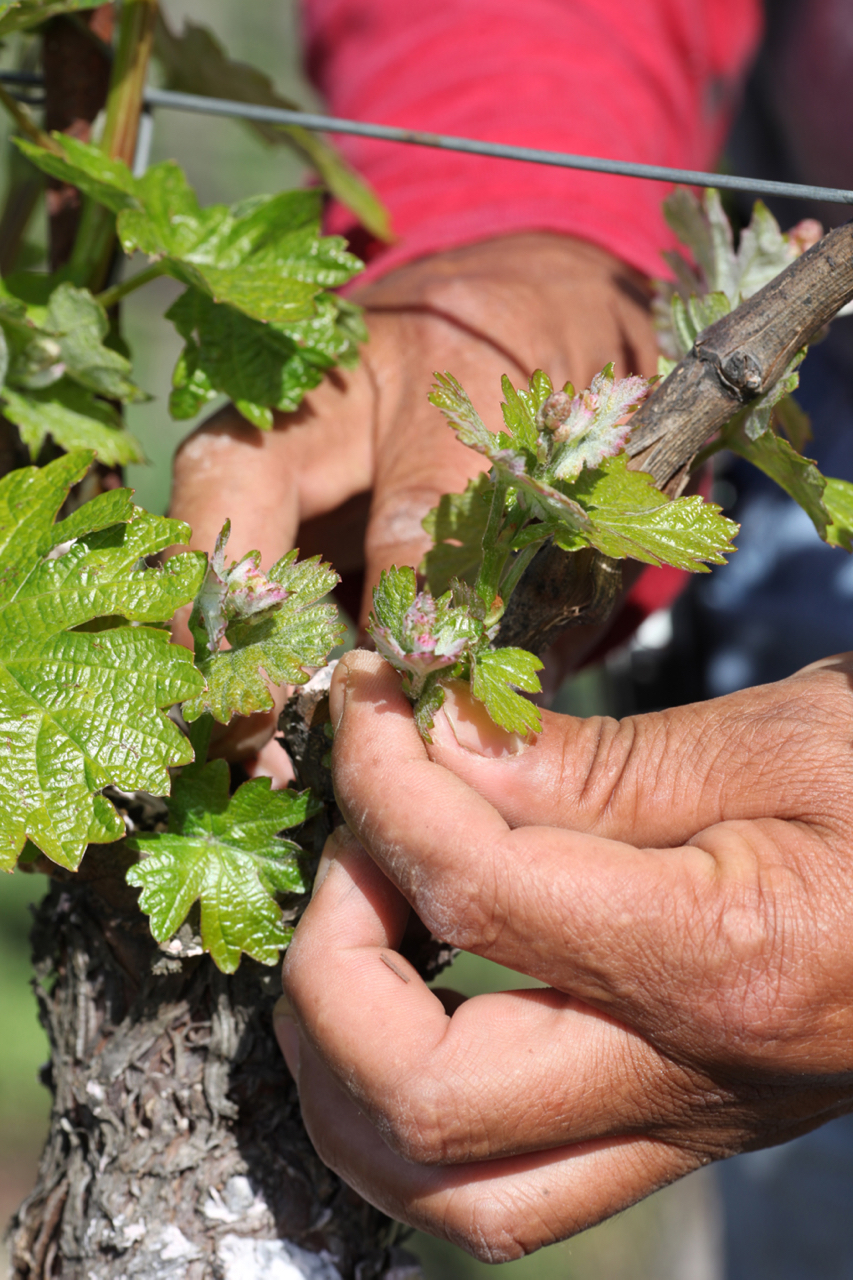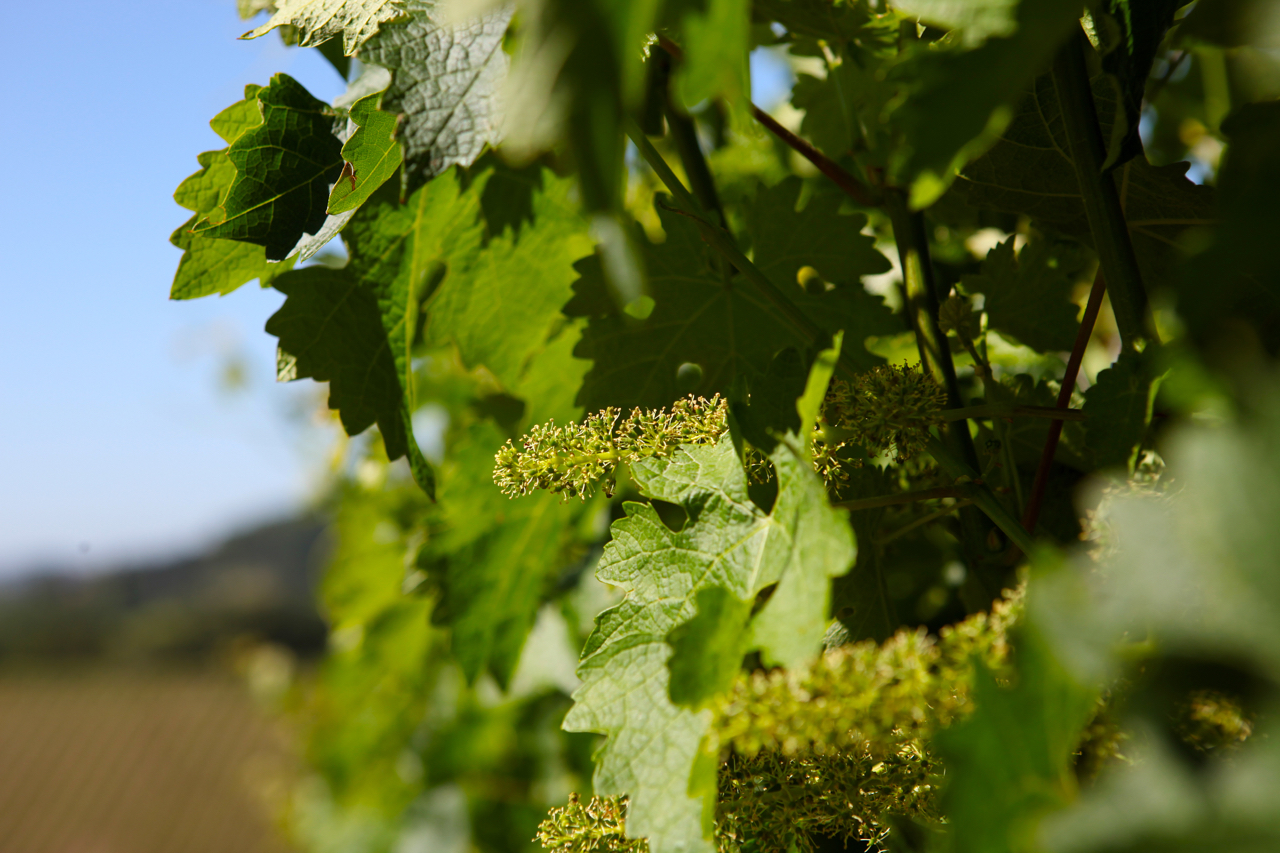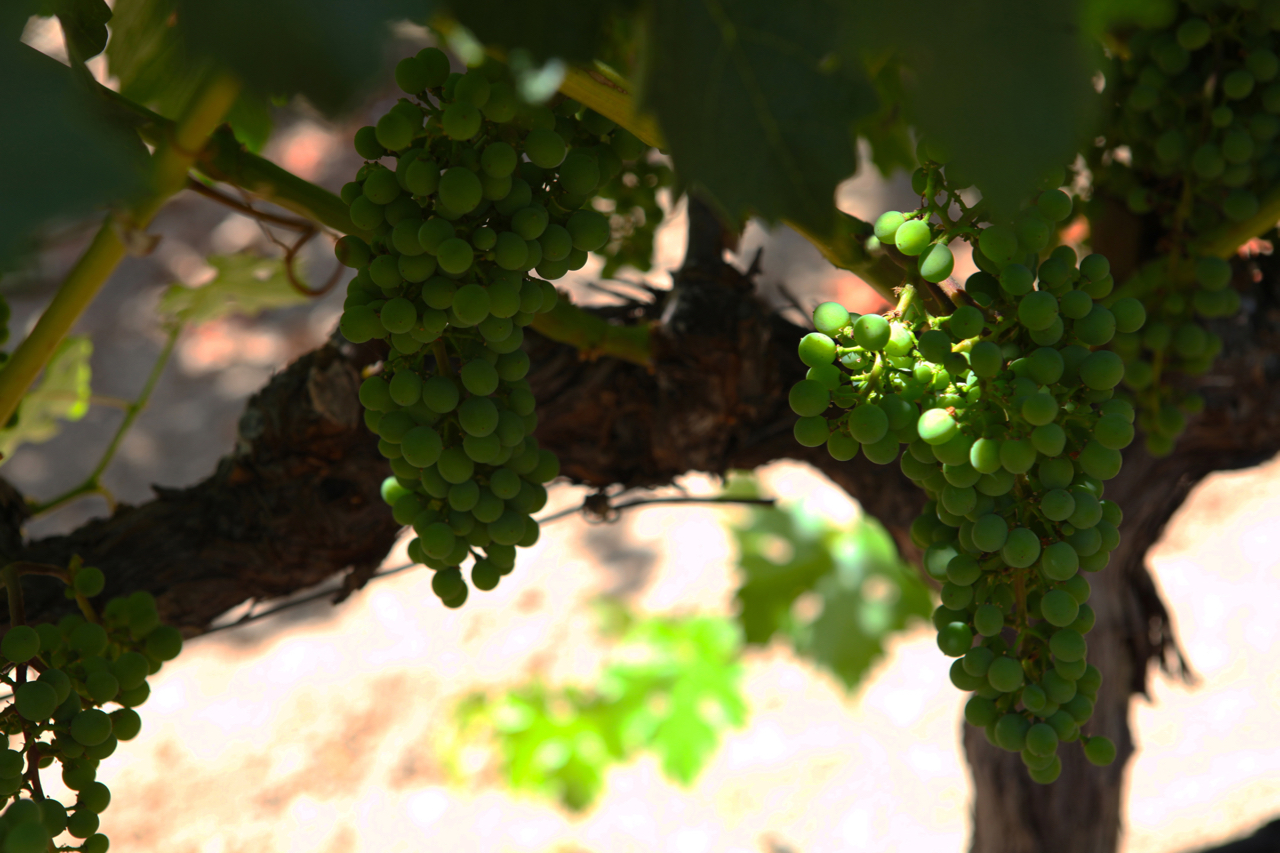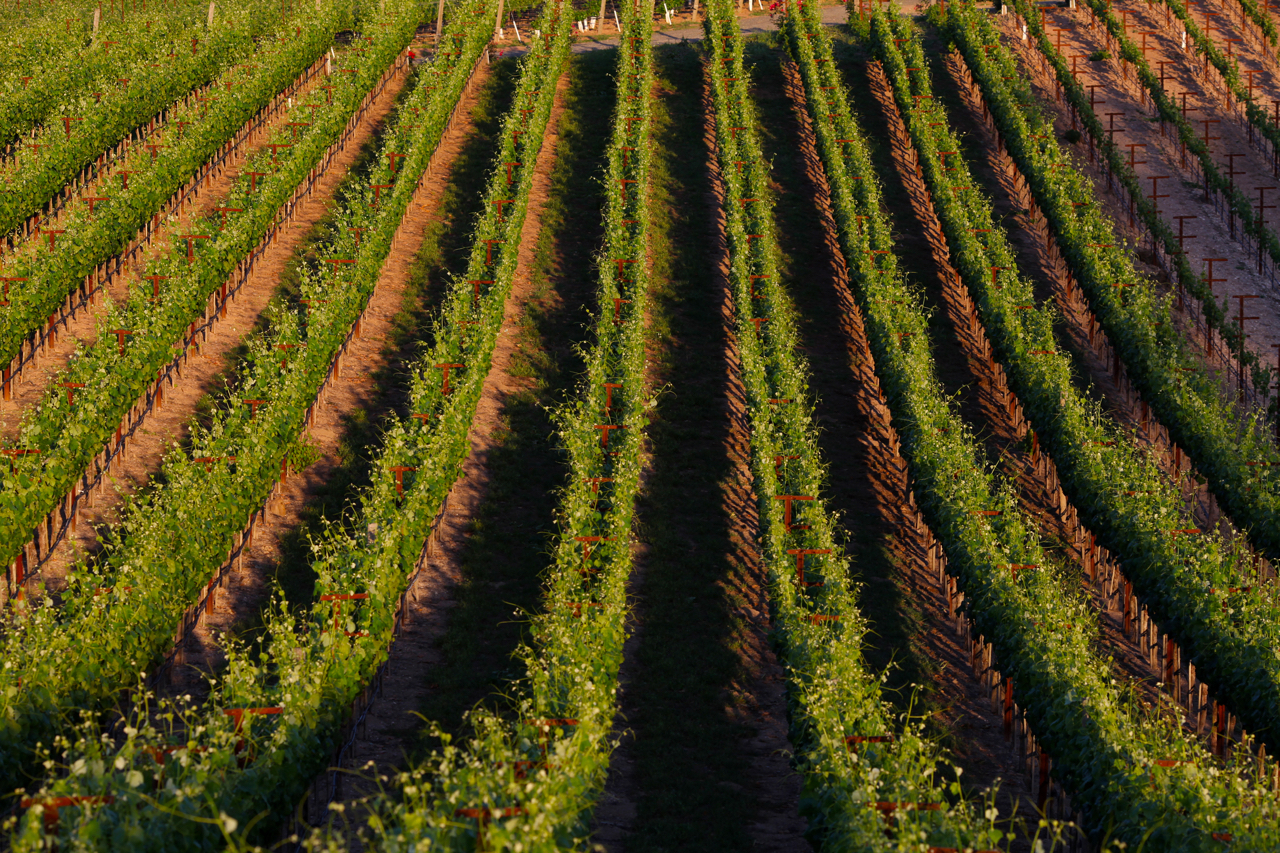Intuitive Farming
At Palmaz, we believe in farming the individual vine, not the vineyard. Tradition and technology seamlessly come together to give us insights into the needs of each vine. While nothing replaces the knowledge gained from walking through the vineyard, personally touching each vine, technologies such as advanced Geographic Informational Systems (GIS) give the winemaking team an understanding of what vines need both above- and below-ground.
By combining farming techniques from the organic, biodynamic and erosion-control philosophies, the Palmaz family has created a truly sustainable farm that will produce great wine for generations to come. From diverse cover crops in the winter to a deficit-irrigation program in the summer, tending to the land is a year-round program.
Our vineyards are nestled at three different elevations, from the hills around the estate to the crest of Mount George, and feature 46 distinct vineyard blocks. The complexity of the terrain results in a variety of micro-climates, all of which influence grapes in unique ways. Each parcel features a distinct rootstock and clonal combination that contributes a special characteristic to the resulting wines. Peruse through the interactive map and explore the vineyard.
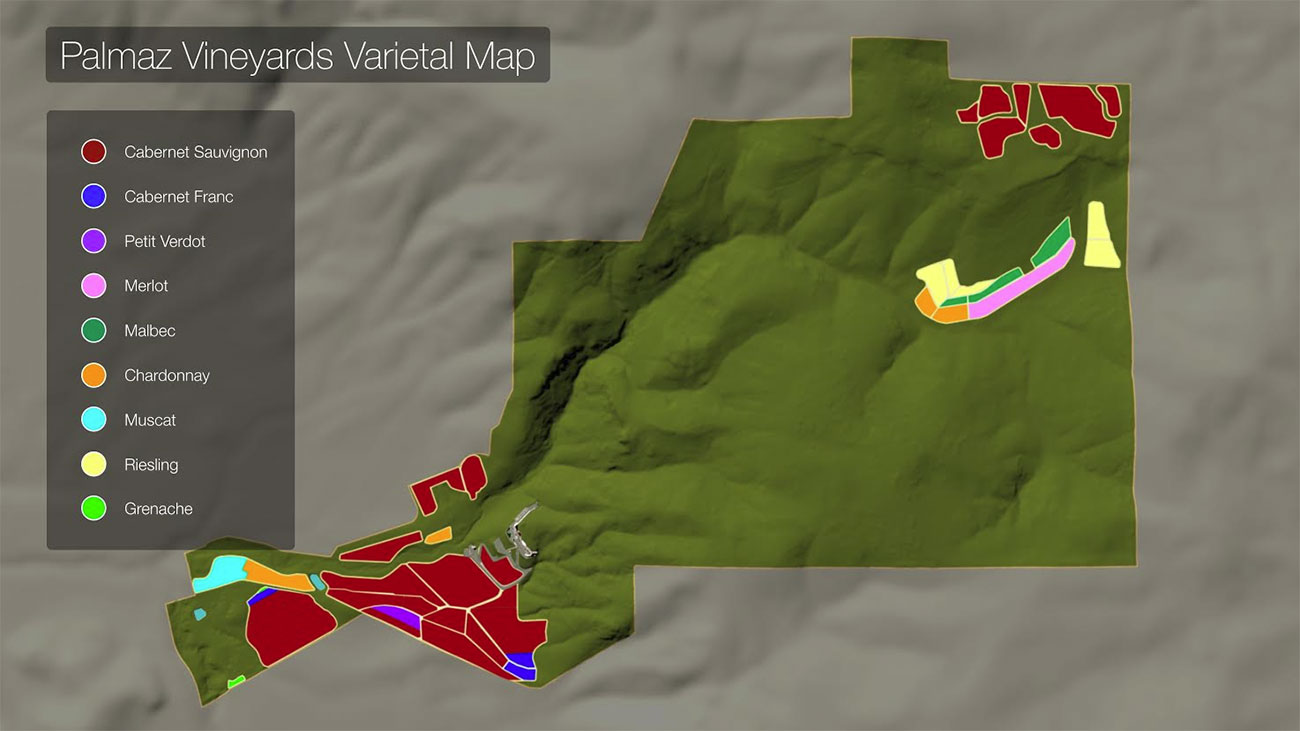
The lowest set of vineyards is 300 feet above sea level, in the hills around the estate; the second set is found midway up Mount George, at 1,200 feet; the third resides at the top of the mountain, at 1,400 feet.
Cycle of Work
At Palmaz, growing grapes of exceptional quality is a yearlong affair involving dozens of rules and steps. The long road to harvest begins in winter, when the vines are pruned to prepare for the coming year’s growth. Follow along in the gallery below for an in-depth look at cycle of work that makes a vintage.

